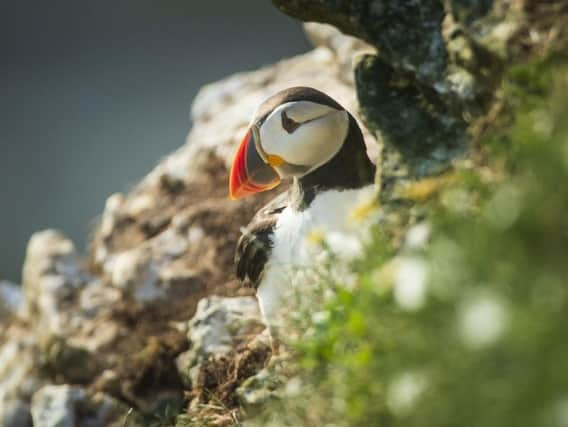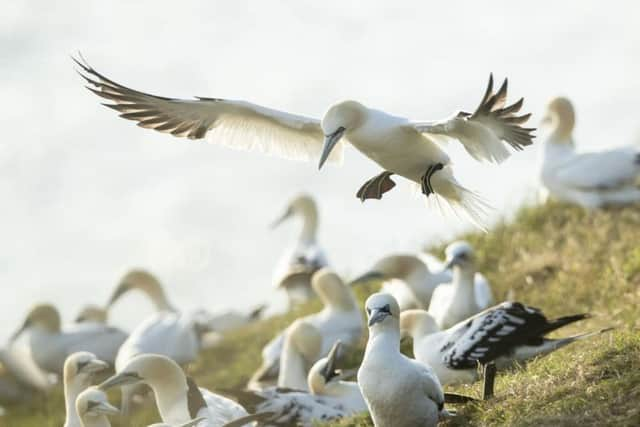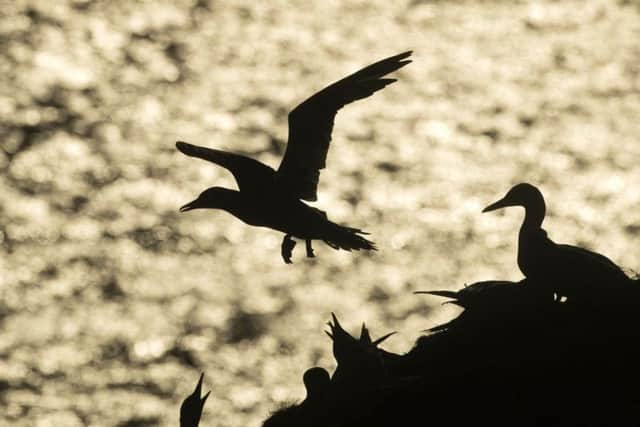Yorkshire's greatest wildlife spectacular


The sight and sound of flocks whirling through the air and heading out to sea in search of food from Bempton Cliffs draws 100,000 visitors a year to its three-mile stretch of coastline between Flamborough Head and Filey.
They throng the clifftop viewing platforms to see the vast colonies of gannets – the largest in mainland Britain – guillemots, razorbills, fulmars and kittiwakes.
Advertisement
Hide AdAdvertisement
Hide AdAnd above all, they come to catch sight of the stars of this annual show during the breeding season from April to July – puffins, with their colourful bills, guttural cry and clockwork-toy flight.


Just last week visitors from the Netherlands and America ventured to the cliff tops to enjoy the comical actions of the puffins. They were able to watch the adults return from fishing forays at sea with sand eels hanging from their bright beaks.
In the 50 years since the RSPB establishing this unique nature reserve, it has become both a haven and a vantage point from which the seabirds can be studied and safeguarded.
And as Bempton hits its half-century, the reserve is at the forefront of informing and educating visitors about the threats to both, its sensitivity underlined by being at the heart of an area of special marine protection running from Flamborough Head to Filey, put in place by the Government in recognition of its importance to breeding seabirds.
Advertisement
Hide AdAdvertisement
Hide AdSpeaking to the Yorkshire Post previously, reserve warden David Aitken said: “We get a lot of people who come here who have heard how fantastic it is and it’s easy to inspire them because the spectacle is second to none. There is nowhere like Bempton Cliffs in mainland Britain, in Europe, even the world.


“You can go to other sites in Europe and you never see the sights, or get the sounds and smells you do here. We need to make sure it stays as special as it is, and that takes a lot of effort.”
Visitor numbers to Bempton have increased dramatically in recent years, and so have school parties, with 1,500 children annually coming to the expanded visitor centre that opened in 2015.
Social media has boosted numbers, with a Facebook and Twitter getting lots of hits from visitors who post pictures and videos of what they have seen.
Mr Aitken has also spoken of the importance of not taking what Bempton Cliffs has to offer for granted and savouring every moment.